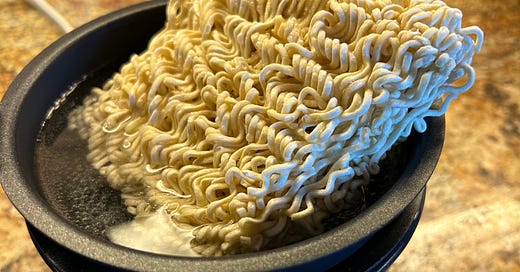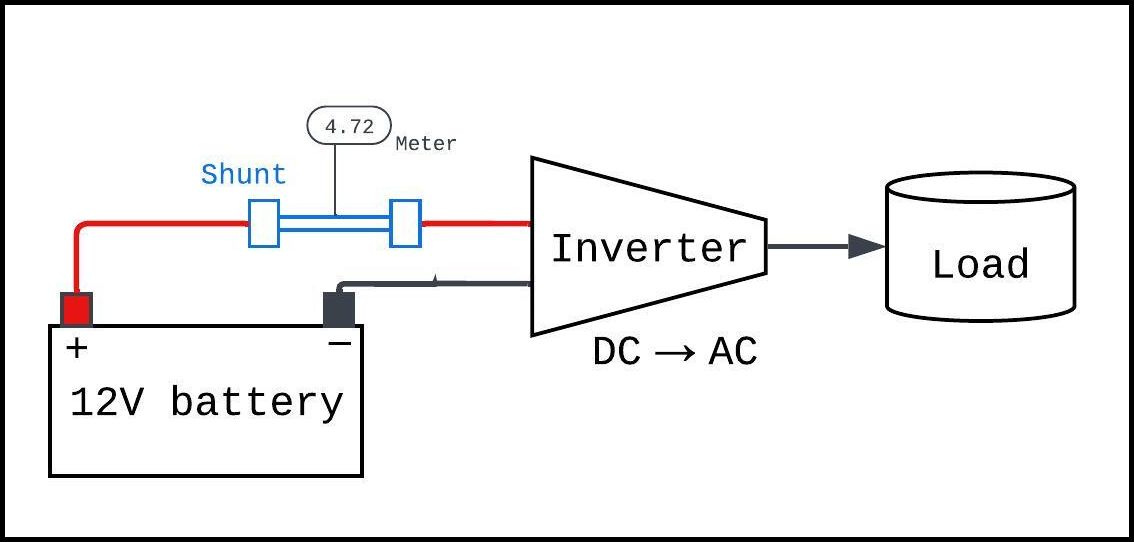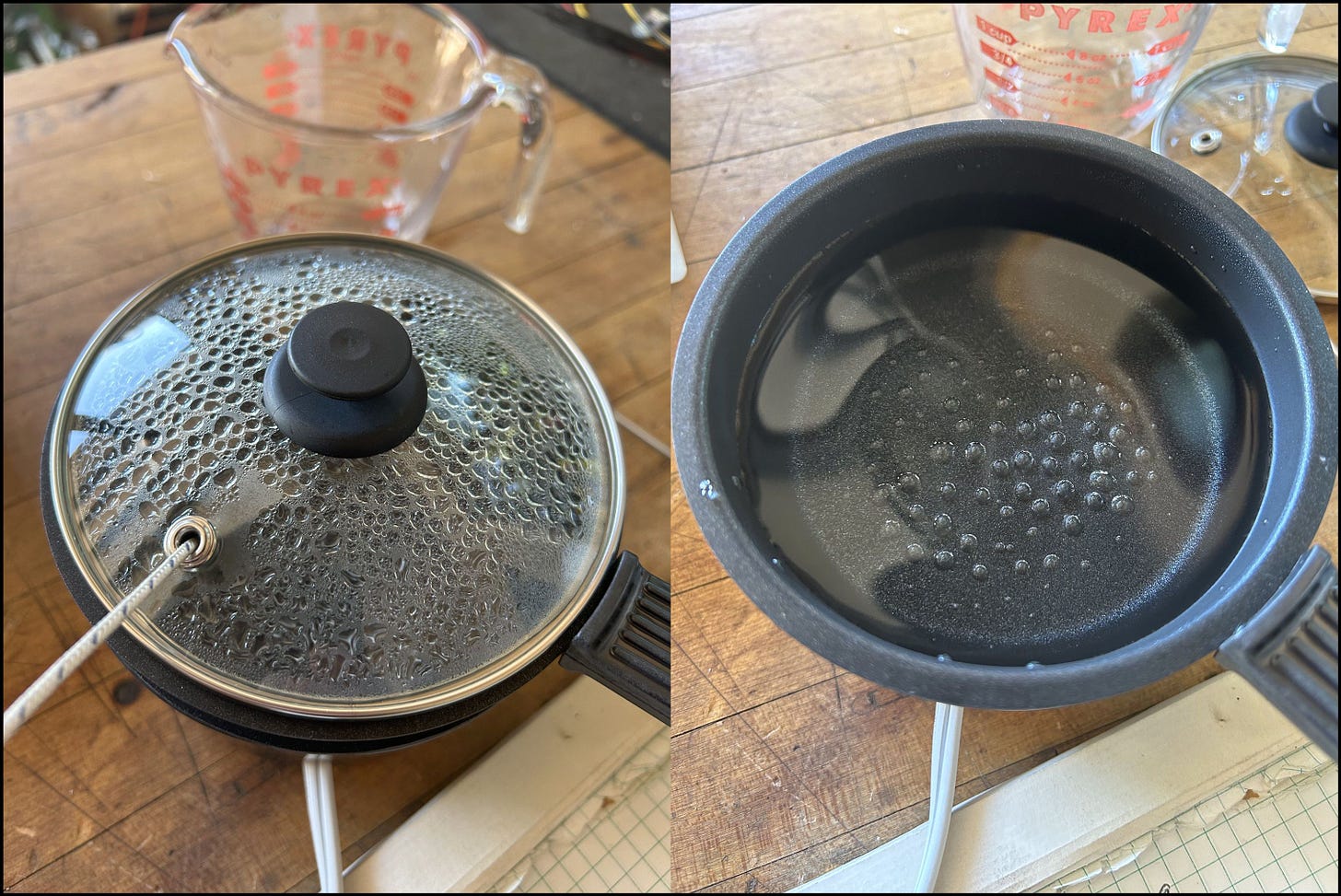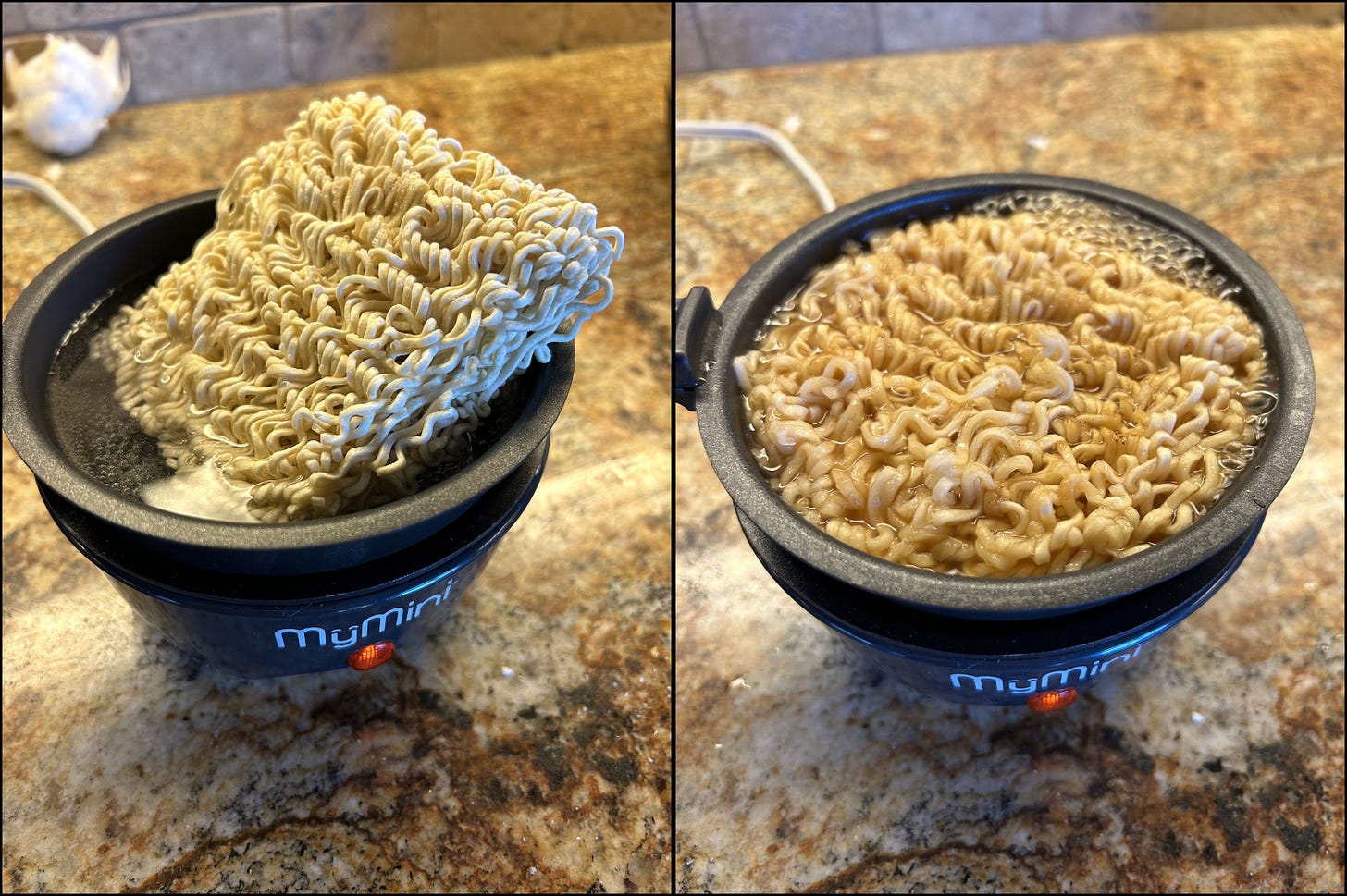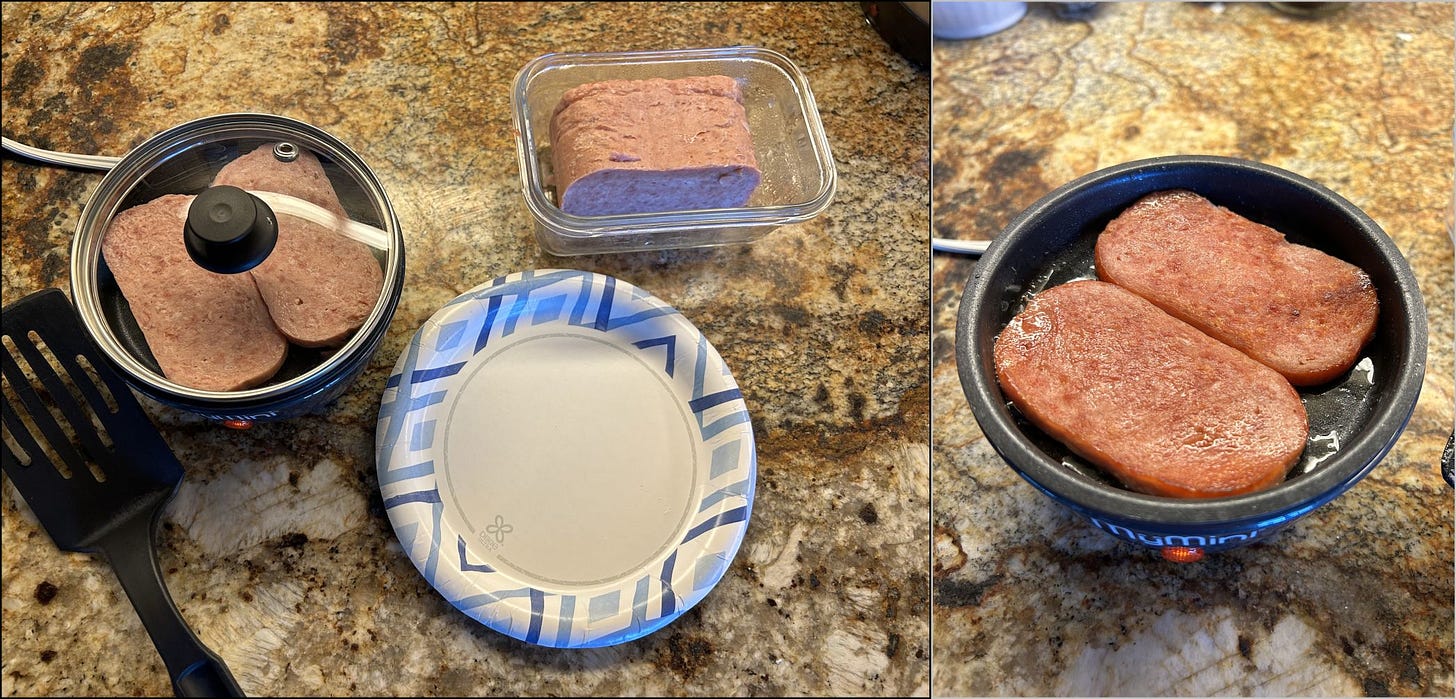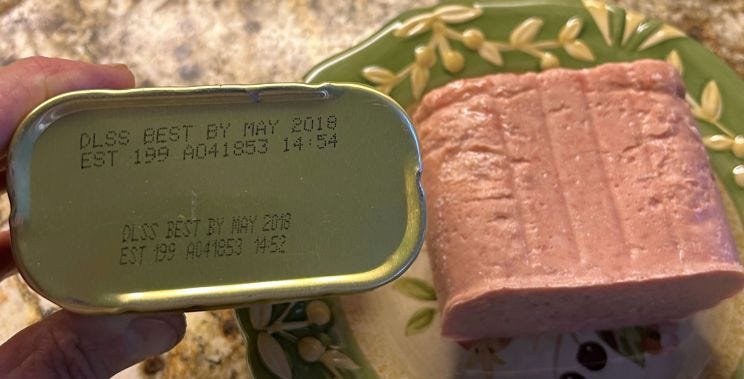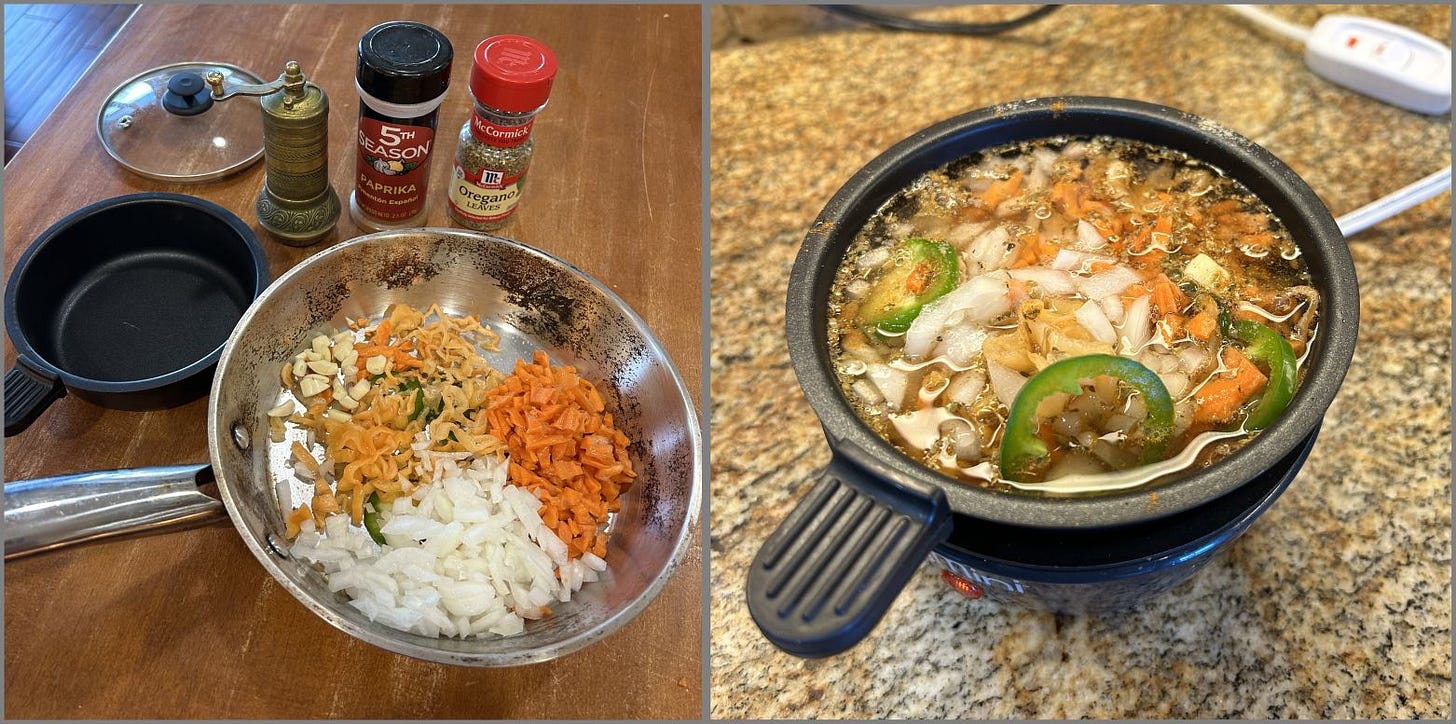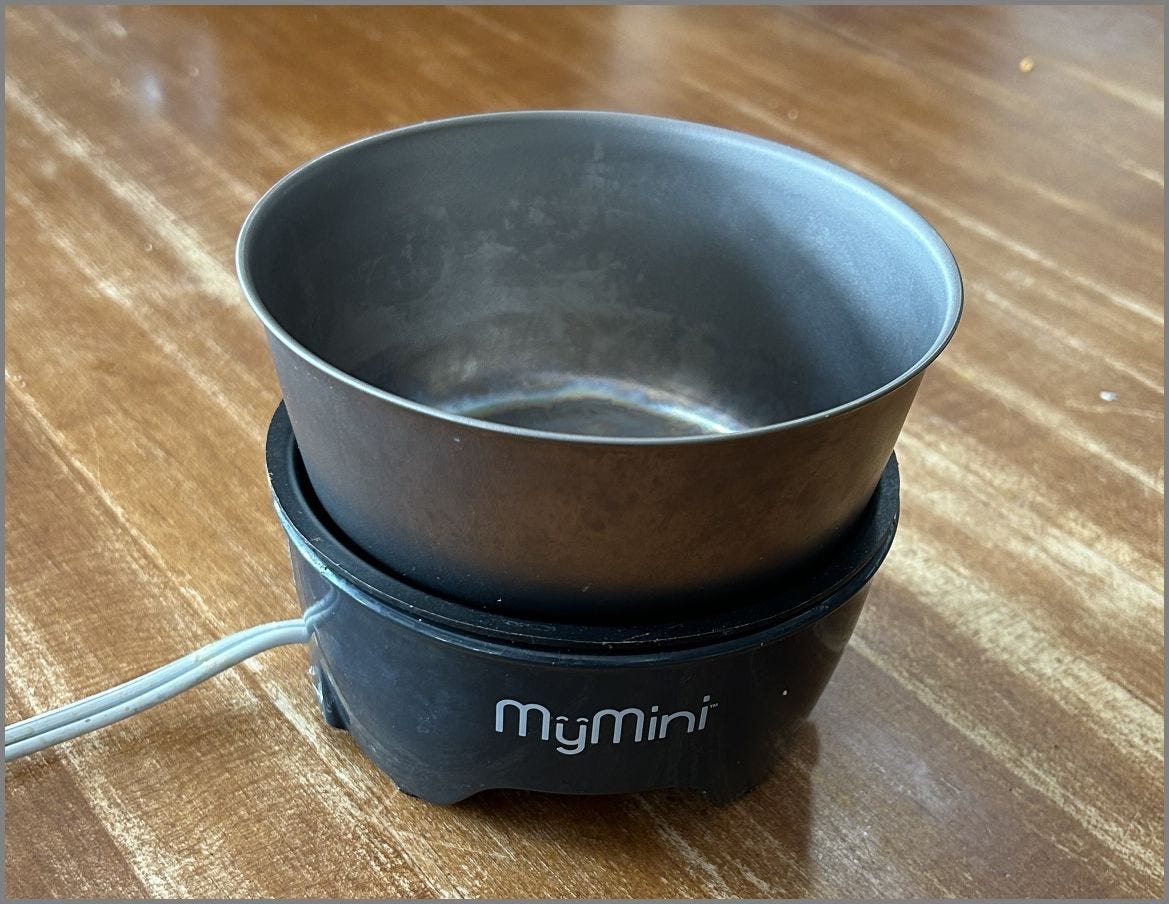The Setup
Before we start, let’s look at the electrical setup common to these examples from which we derive cook times and thus, required energy.
From left to right: a good size 12V rechargeable battery runs an inexpensive Harbor Freight 400W inverter to generate 120VAC to approximate what comes out of the wall in your house. The current over the 12V wires is measured by what is called a shunt: a precise resistance which converts the amps flowing through it to a small voltage which can be read by a meter. In the diagram, the meter shows 4.72 so that many amps are running through that shunt and thus, into the inverter which is based on the load.
Lastly we have the load which for this page is a MyMini Skillet & Noodle Cooker for $10 at Wal-Mart. It draws 260W and reaches a temperature of around 350°F so you really can grill with it. Be careful not to burn yourself with the steam coming out of the vent in the small glass lid!
I chose this to experiment with and the outcomes are listed below.
n.b. As of this writing, the gear will run you around $60 plus a battery. You can start with your car battery (good practice!) and you don’t need a shunt since I took the measurements. As with everything prep I suggest you get it now because when you realize you need it, so will everyone else and you may will likely lose the opportunity.
Added 13-Jul-23:
I now use this all the time in the kitchen. Based on my monthly electric bill, this little guy costs 6¢/hour to run. Talk about useful and essentially free…
Added 24-Jul-23:
This cord switch is a useful addition and took me ~6 minutes to wire in.
Boiling Water - 9 minutes, 3.6Ah
This is about as basic as it gets, so its a good place to start.
The numbers are: 1 cup of cool (69°F) water. Starting voltage of the battery was 12.7V which dropped to 11.9V when the inverter and load were switched on. Current demand was 24A, so 24*11.9 = 286W in, yielding a converter efficiency of 260/286 = 91% at this current (pretty good). The 5” skillet is 100% efficient since all the input power goes to heat.
It took just under 9 minutes to get the water to 195°F which is boiling at this altitude. So, 24A * 0.15 hr = 3.6 Ah of energy consumed. My 100W solar panel decided to put out 4.2A on this sunny day so it replaced that energy in the battery in about an hour.
That gives you a pretty good rule of thumb: 9 minutes of cooking takes 1 hour to replace with a 100 watt solar panel that is just tossed outside in the bright sun; less time if you optimize the angle of the panel or add more panels.
Ramen Noodles - 12 minutes, 5Ah
You stored a bunch of noodle meals when they were on sale 14 for $1 so why not learn what the electrical energy budget is to cook one? As you can see the noodle cake needs to be snapped up to fit in the bowl but add 1 cup of water and 12 minutes later, it’s lunchtime. This takes more energy because you are heating water and then boiling it for 3 minutes to cook the noodles.
Spam - 7 minutes, 2.8Ah
The perennial favorite of backpackers and campers, Spam is now more convenient with single-use serving packets. Still, the can size is useful for feeding a couple people a hearty breakfast – and you can reuse the can for something else, like an emergency escape pod.
On the lower griddle portion two slices fit snugly. I sliced mine thick to prevent burning. Use the glass lid and grill 5 minutes on one side and then 2 on the other.
Serving suggestion: Eat with jalapeño mustard if possible.
Habañero Hot Sauce - 15 minutes
I love habañeros and I love hot sauce, applied to pretty much everything. So when my friend JU sent me the recipe I had to try it out. The ingredient list is for a half batch since I’m the only one in the house that loves hot stuff.
Ingredients 6-9 habañeros, seeds removed 1 carrot 2 bulbs of garlic, peeled 1/2 shallot (I just use some white onion) 3/4 cup distilled vinegar 1 teaspoon salt 1/2 teaspoon each paprika, oregano and black pepper Optional 1-2 jalapeños, seeds removed 1 tablespoon apple sauce
Chop everything up, bring to a simmer in the MyMini for 15 minutes with the lid off so it doesn’t boil over. In a ventilated area! Then transfer it to a blender and blend until smooth. I used one of those small “Bullet” smoothie mixers since this is such a small batch.
A Bigger Bowl
I went out on the prowl and found that Snow Peak, a top-notch backpacking equipment company, makes a titanium bowl that fits nicely atop the heating plate of the base.
They are $19 at REI Co-Op and allow you to cook an entire big can of stew, etc. You’ll need a pot grabber tool since it does not have a handle (it’s a bowl not a pot). Still it is totally worth it!

